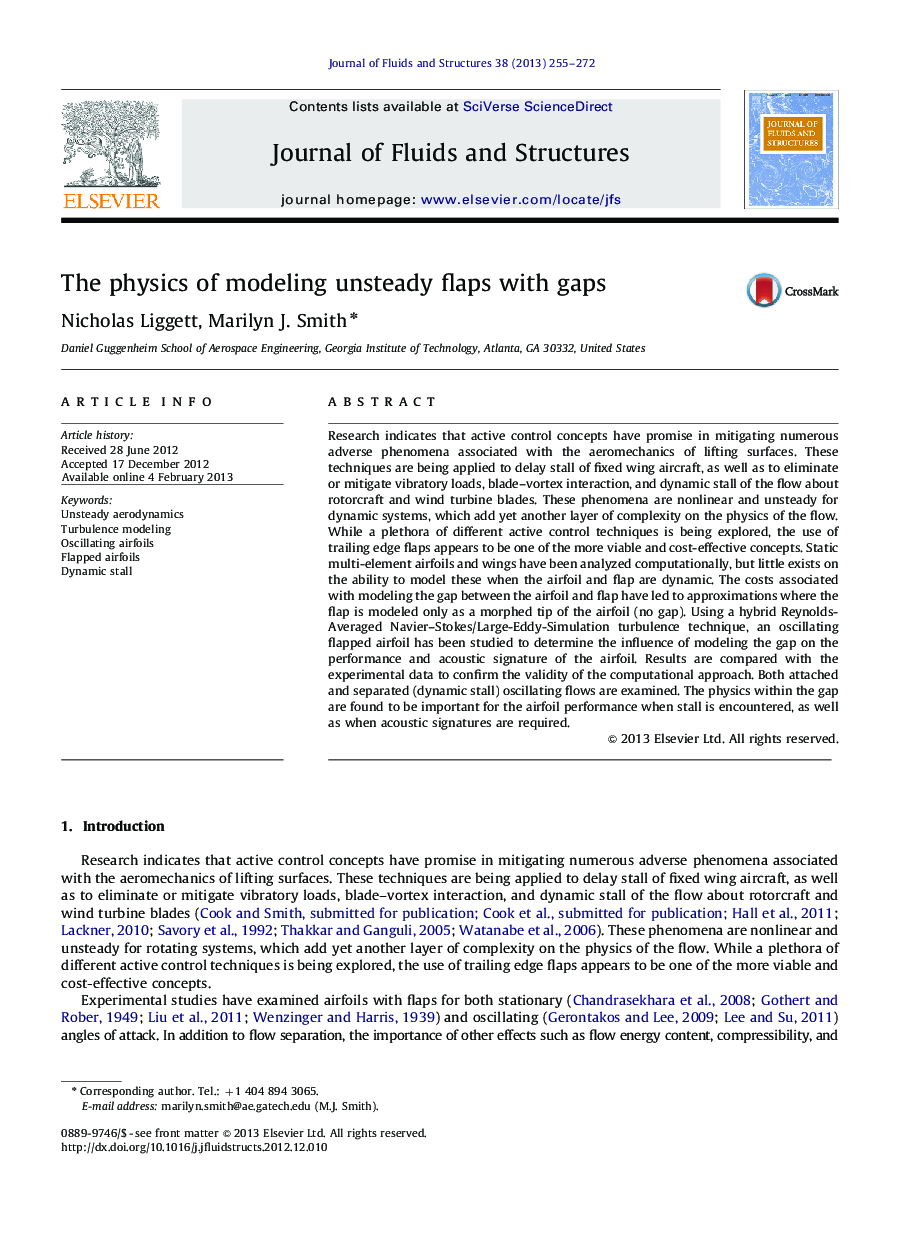| Article ID | Journal | Published Year | Pages | File Type |
|---|---|---|---|---|
| 797063 | Journal of Fluids and Structures | 2013 | 18 Pages |
Research indicates that active control concepts have promise in mitigating numerous adverse phenomena associated with the aeromechanics of lifting surfaces. These techniques are being applied to delay stall of fixed wing aircraft, as well as to eliminate or mitigate vibratory loads, blade–vortex interaction, and dynamic stall of the flow about rotorcraft and wind turbine blades. These phenomena are nonlinear and unsteady for dynamic systems, which add yet another layer of complexity on the physics of the flow. While a plethora of different active control techniques is being explored, the use of trailing edge flaps appears to be one of the more viable and cost-effective concepts. Static multi-element airfoils and wings have been analyzed computationally, but little exists on the ability to model these when the airfoil and flap are dynamic. The costs associated with modeling the gap between the airfoil and flap have led to approximations where the flap is modeled only as a morphed tip of the airfoil (no gap). Using a hybrid Reynolds-Averaged Navier–Stokes/Large-Eddy-Simulation turbulence technique, an oscillating flapped airfoil has been studied to determine the influence of modeling the gap on the performance and acoustic signature of the airfoil. Results are compared with the experimental data to confirm the validity of the computational approach. Both attached and separated (dynamic stall) oscillating flows are examined. The physics within the gap are found to be important for the airfoil performance when stall is encountered, as well as when acoustic signatures are required.
